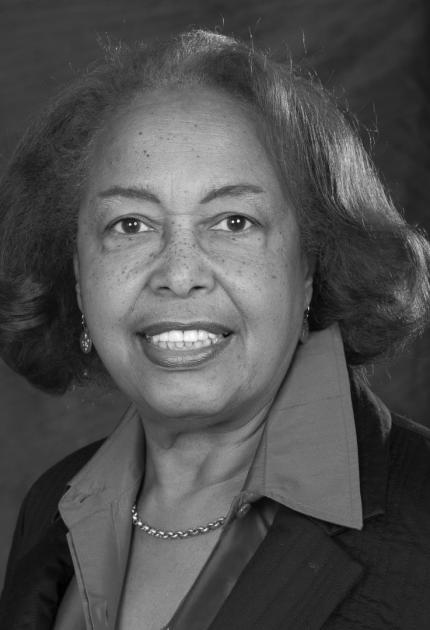About
12 May 2022
Two Optica members inducted to National Inventors Hall of Fame
Patricia Bath and Ming-Jun Li are among those honored for world-changing inventions in the optical sciences
WASHINGTON—Each year, the National Inventors Hall of Fame (NIHF) inducts a new class of inventors who have improved society with their patented work. Among the 2022 class of Inductees are: Optica Senior Member Patricia Bath and Optica Fellow Ming-Jun Li, who are being honored for their inventions of laserphaco cataract surgery and bend-insensitive optical fiber, respectively. Bath is one of 11 inventors receiving this honor posthumously.
“Patricia Bath’s improvements on laser cataract surgery and Ming-Jun Li’s contribution to developing innovative optical fibers showcase the breadth of problems inventors working in the field of optics are capable of solving,” said Optica CEO Elizabeth Rogan. “We celebrate Drs. Bath and Li for their achievements and their inductions into the National Inventors Hall of Fame.”
NIHF inductees are selected from among nominees holding U.S. patents for inventions that are groundbreaking or significant and that have improved societal well-being. Inductees have been honored for inventions in many fields, which include now-everyday items such as windshield wipers and BAND-AIDs. Inventors of optics technologies like Nobel Laureate and Optica Fellow Arthur Ashkin, who created optical tweezers, are also among those honored by NIHF. Along with Bath and Li, this year’s inductees also include the inventors of ibuprofen, synthetic lubricants and the modern parachute.
About Patricia Bath

Dr. Patricia Bath, an ophthalmologist who spent much of her career at the University of California, Los Angeles, is recognized for her creation of an improved method of cataract surgery that performed all steps of cataract removal. In 1989, Bath patented her laserphaco cataract technique, becoming the first Black woman physician to receive a medical patent. Laserphaco, “phaco” being short for PhotoAblative Cataract, is now used around the world for quick, nearly painless cataract surgeries. She received two more patents related to the laserphaco technique and two others for use of ultrasound in cataract removal. She was named an Optica Senior Member in 2015.
Bath received a bachelor of arts degree from Hunter College in 1964 and her medical degree from Howard University in 1968. She completed an ophthalmology residency at New York University before completing a fellowship at Columbia University in corneal transplant surgery. During that fellowship, Bath became one of the first to document the high prevalence of blindness among Black patients due to lack of access to ophthalmic care. This led to her proposing the discipline of community ophthalmology and co-founding the American Institute for the Prevention of Blindness. In 1974, she was recruited by UCLA and became the first woman ophthalmologist on the faculty. She conceived the idea for the lasophaco device in 1981 and received a patent for her invention in 1988. The laserphaco device has been instrumental in restoring sight to people around the world experiencing cataract-related blindness.
About Ming-Jun Li

Corning Incorporated scientist Dr. Ming-Jun Li is honored alongside collaborators Dr. Dana Bookbinder and Dr. Pushkar Tandon for their invention of ClearCurve® optical fiber, a bend-insensitive fiber. This invention contained a core with a low refractive index that prevented light from being diffracted at sharp bends, causing data loss. ClearCurve allows for the installation of optical fibers in locations unsuitable to conventional optical fibers and is frequently used in fiber-to-the-home and data center applications.
Li holds more than 260 patents in addition to the patents for ClearCurve that he holds with Bookbinder and Tandon. He was named an Optica Fellow in 2009 for his significant contributions to optical fiber technology. Li joined Corning Incorporated in 1991 after receiving his bachelor’s degree from the Beijing Institute of Technology, his master’s degree in optics and signal processing from the University of Franche-Comté and his doctorate in physics from the University of Nice.
Bath and Li were officially inducted to NIHF on May 5, along with 25 other outstanding inventors. The ceremony took place during “The Greatest Celebration of American Innovation,” a joint event held by NIHF and the United States Patent and Trademark Office.
About Optica
Optica, Advancing Optics and Photonics Worldwide, is the society dedicated to promoting the generation, application, archiving and dissemination of knowledge in the field. Founded in 1916, it is the leading organization for scientists, engineers, business professionals, students and others interested in the science of light. Optica's renowned publications, meetings, online resources and in-person activities fuel discoveries, shape real-life applications and accelerate scientific, technical and educational achievement. Discover more at: Optica.org
Media Contact
